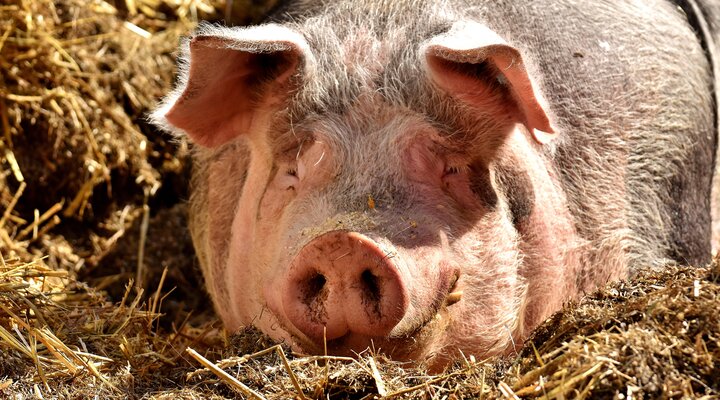New antigen identification in the African swine fever virus genome thorough a plasmid DNA library
Project summary
African swine fever (ASF) is a haemorrhagic devastating pig disease with mortality rates up to 100% caused by African swine fever virus (ASFV). The disease is endemic in Africa but now it is also present in the Russian Federation and other Eastern European countries, becoming a global threat. Currently, there is no vaccine nor treatment and the only countermeasures against ASF are the rapid diagnosis and culling of infected animals. However, in recent years several new approaches in the field of vaccinology have been developed against ASFV. The generation of recombinant attenuated ASFV isolates is a very promising approach, but a subunit vaccine would be a much safer and cheaper approach to vaccination and would pose less constraints for licensing in both scenarios, the European and the African. Previous studies have demonstrated the key role that humoral and cellular response can play in protection and several antigens targeting CD8+ T-cell and antibody response were identified. Unfortunately, none of them or combinations of them were able to protect a 100% of the pigs after ASFV challenge. The tested antigens eliciting an antibody response were immunodominant in the domestic pig sera, and very little is known about other possible subdominant antigens. On the other hand, an exhaustive screening of bushpig and warthog (resistant to ASF) sera was never done before. In this project we propose a comprehensive approach where we will compare the pattern of antibody recognition of domestic pig and wild pig sera using a DNA library encoding the complete ASFV Kenya 1033 genome individually and test their neutralizing capacity. The identified antigens will be susceptible to be included in a future vaccine against ASFV.
Project outcomes
African swine fever virus (ASFV) is the causative agent of African swine fever (ASF). No treatment nor vaccine is available globally for this deadly disease with mortality rates up to 100%. The disease has been spreading all over the globe in the past years, stressing the importance of developing efficient countermeasures against ASF, since biosecurity measures have not been 100% efficient in controlling the disease. Pig recovered from infection are immune to infection with virulent strains and wild African pigs are resistant to the disease. However, the complexity of ASFV, encoding more than 150 different polypeptides, many of them with still unknown functions and other specialized in evading the immune system, together with the variability of the virus isolates; has complicated the identification of the mechanisms of protections against ASFV. Several antigens have been identified with a potential protection capacity. However, the protection achieved so far is far from being satisfactory. This was the starting point of this project, to identify new antigens in the ASFV genome with potential protective capacity. A plasmid DNA library encoding all the ASFV Kenya-1033 ORFs was designed and generated in collaboration with GeneMill (Liverpool, UK). 178 plasmids were sent to the International Livestock Research Institute (ILRI) and the Institut de Recerca i Tecnologia Agroalimentaries – Centre de Recerca en Sanitat Animal (IRTA-CReSA), both partners in this project. From the 178 plasmids sent, 167 were able to grow in bacterial culture and 92 of the ASFV proteins were expressed individually in mammalian cells. Duplicates of the gene library are kept at ILRI and IRTA- CReSA facilities. The plasmid collection was used to transfect mammalian cells and the corresponding protein lysates were used to assess the pattern of antigen recognition using anti-sera from domestic pigs experimentally immunized with inactivated virus, naturally attenuated virus strains, recombinant virus and ASFV polypeptides; and also with anti-sera from wild African pigs (warthogs), naturally resistant to the disease. An ASFV virus neutralization assay (VNA) was set-up to evaluate the capacity of the anti-sera to inhibit the viral infection in the wild boar cell line WSL. The assay is now being GLP validated to be offered as a service at ILRI. The virus neutralization assay (VNA) has allowed us not only to identify sera with neutralizing activity but also to identify sera with capacity to in vitro enhance the infection. Identifying the specific targets for both types of antibodies might be of key importance for future vaccine development. The results from both assays, antigen screening and VNA allowed us the selection of 7 ASFV antigens for further investigations. The in vivo immunogenicity of the antigens will be tested in the near future thanks to a recently funded follow-up project, Thus, the polyclonal sera obtained after immunization will allow confirming the VNA of the individual proteins and select the best antigen cocktail to rationally designed a future antibody based ASFV subunit vaccine.
